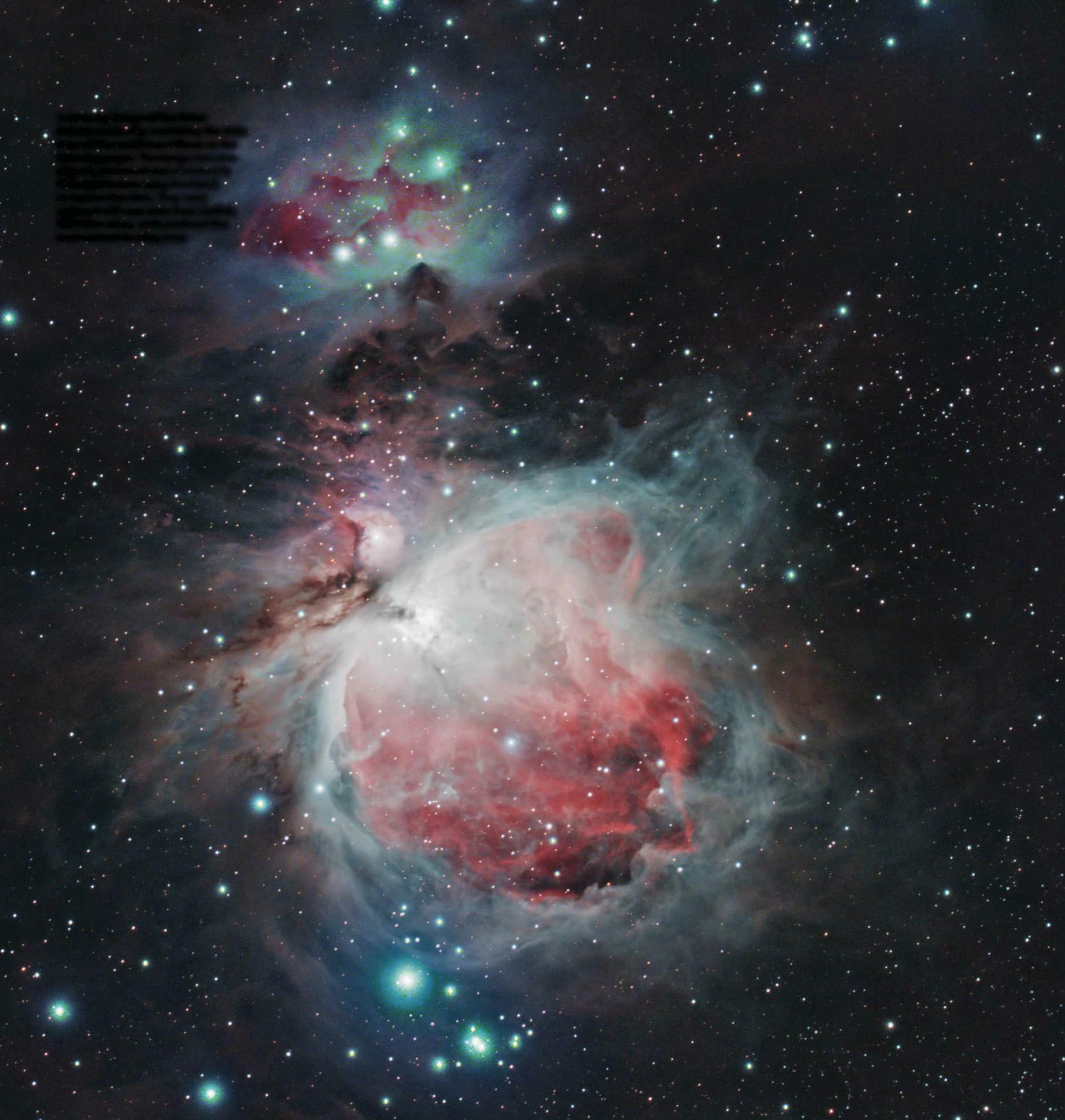
Used with a colour astro camera, they help to combat light pollution and make it easier to image deep-sky targets from cities. Compared to mono cameras, one-shot colour cameras also help in this regard as they save time imaging. Combining data captured with a multi-band filter and with a standard light-pollution filter allows some good creativity when it comes to processing; the colour can be changed, and stars moved from one image to another to give some very impressive results.
Here we have examined a selection of multi-band filters to look at the differences in the wavelength of light they let pass through to the camera sensor. There are dual-band filters, which mainly pass the light emission from ionised hydrogen alpha (Ha) and oxygen III (OIII) (though some are now passing sulphur II (SII) and Olll emission), which can enhance the detail within nebulae. There are tri-band filters too, which generally have the addition of passing hydrogen beta emission, useful for adding detail to areas that contain OllI.
The target we chose to image with the eight filters was the Orion Nebula; it has a good mix of gases to image and, in the outer areas beyond the Trapezium, great detail which is harder to capture with standard light-pollution filters. For each multi-band filter, we captured 40x 180-second exposures, processing this with a full set of calibration frames in PixInsight. Further processing was limited to noise control and gentle stretching, but no colour calibration, as we wanted to show what each filter produced.
Optolong L-Ultimate dual-band 3nm filter
2-inch, £389
Esta historia es de la edición April 2023 de BBC Sky at Night Magazine.
Comience su prueba gratuita de Magzter GOLD de 7 días para acceder a miles de historias premium seleccionadas y a más de 9,000 revistas y periódicos.
Ya eres suscriptor ? Conectar
Esta historia es de la edición April 2023 de BBC Sky at Night Magazine.
Comience su prueba gratuita de Magzter GOLD de 7 días para acceder a miles de historias premium seleccionadas y a más de 9,000 revistas y periódicos.
Ya eres suscriptor? Conectar

Could We Find Aliens by Looking for Their Solar Panels?- Designed to reflect ultraviolet and infrared, the panels have a unique fingerprint
Researchers searching for life beyond Earth spend a lot of time thinking about what telltale signs might be detectable astronomically. Forms of unambiguous evidence for the presence of life on another world are known as biosignatures. By extension, techno signatures are indicators of activity by intelligent, civilisation-building life.

Antimatter- In our continuing series, Govert Schilling looks at antimatter, the strange counterpart to most of the matter filling our Universe
Particles and corresponding antiparticles are very much alike, except they have opposite electrical charges. For instance, the antiparticle of the electron - known as the positron - has the same tiny mass, but while electrons carry a negative electrical charge, positrons are positively charged.

Where Have All The Milky Way's Early Stars Gone?- Our Galaxy has a curious lack of pristine stars
The Big Bang produced a Universe filled almost exclusively with hydrogen and helium; all other elements - what astronomers call metals - were produced by stars, supernovae and everything that happens later. So if you can pick out a pristine star with no metals polluting it from among the billions in the Milky Way, then you are likely to have a star dating from our Galaxy's earliest days.

Inside The Sky At Night - Two years ago, exoplanet scientist Hannah Wakeford received some of the first data from the JWST
Two years ago, exoplanet scientist Hannah Wakeford received some of the first data from the JWST. In July's Sky at Night, we discovered what she's learned since then.

How to stack DSLR data in Siril
Easily combine multiple frames to boost detailin your astro photos

Lunar occultation of Saturn
You'll need to strike a balance on 21 August to capture the Moon covering the ringed planet

How to plot a variable star light curve
A rewarding project to chart stars that change brightness

Smartphone photography with a telescope
Mary Mcintyre explains how to get impressive night-sky images using your phone

Once-a-century solar storm is overdue
If a Carrington Event struck today it would be catastrophic, says Minna Palmroth

The new era of human spaceflight
There's been a step-change in crewed space missions since the dawn of the 21st century. Ben Evans charts its course and looks ahead to future horizons